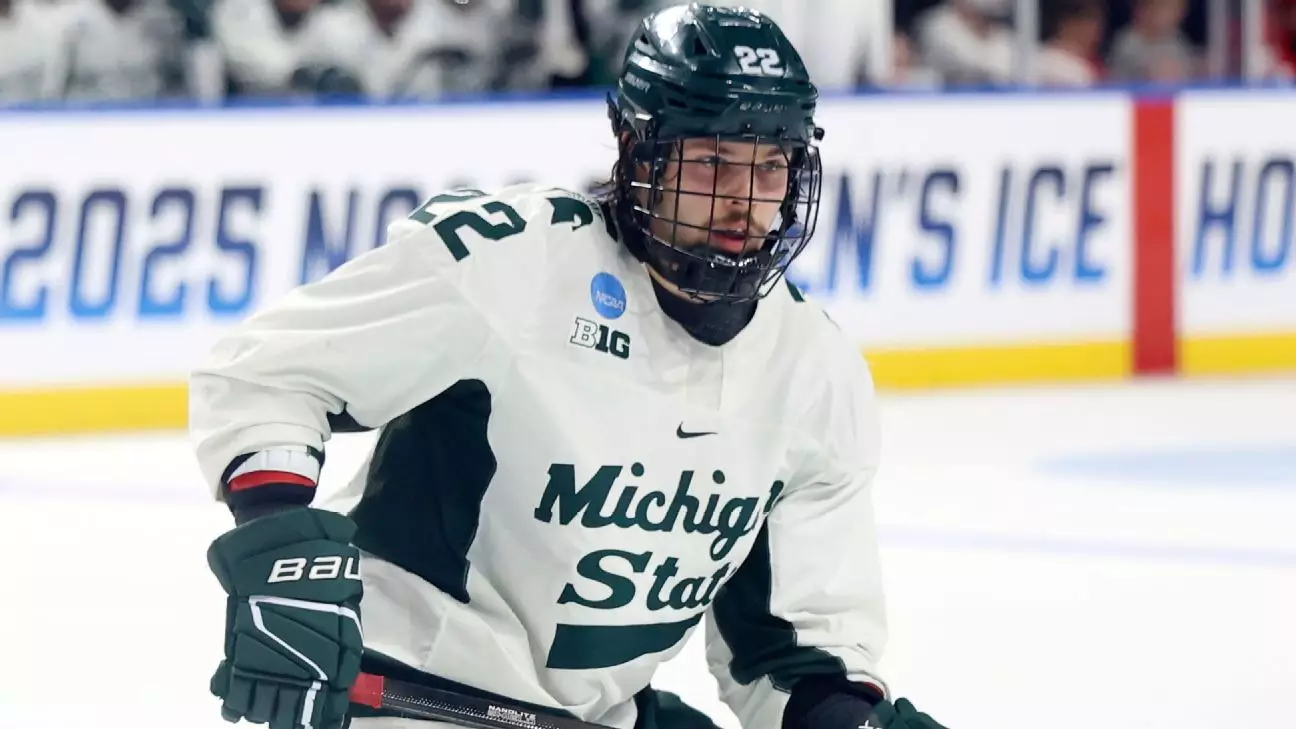The recent trade that brought Isaac Howard to the Edmonton Oilers signals a paradigm shift in the organization’s strategic outlook. Howard, who captured national attention by clinching the Hobey Baker Award as the NCAA’s top men’s player, embodies a rare blend of skill, vision, and leadership. His decision to leave Michigan State after a highly productive junior season demonstrates a calculated pursuit of his professional ambitions, and the Oilers’ willingness to invest in him immediately underscores their long-term vision. Unlike many other prospects, Howard’s pedigree is marked not only by statistical excellence but also by the intangibles of clutch performance and leadership, making him an invaluable addition. Edmonton has recognized the potential for Howard to become a cornerstone in their offensive core, especially given the current cap constraints and roster adjustments.
In stark contrast, Tampa Bay’s decision to trade Howard reflects a broader organizational strategy. The Lightning, renowned for their strategic depth and roster flexibility, chose to acquire prospect center Sam O’Reilly—an up-and-coming talent with promising offensive prowess—anticipating that Howard might seek opportunities elsewhere. This move exemplifies the often harsh realities of modern NHL management, where prospects with high upside are often traded to maximize team flexibility and financial stability. It also raises questions about the delicate balance between nurturing young talent and immediate competitive success. For Howard, being traded upstream from a team poised for multiple Stanley Cup runs to an organization in a shifting rebuild signifies an opportunity to shape his trajectory on his terms.
Howard’s Impact on Edmonton and the Broader NHL Landscape
Howard’s signing with the Oilers is more than just a routine transaction—it’s a strategic statement. The Oilers, in a playoff-oriented “championship window,” are clearly seeking to maximize their offensive talent with players who can grow into leadership roles. Howard, fresh off a dominant college season, offers a high-ceiling offensive game that aligns well with Edmonton’s roster needs. His youth, combined with the contract’s team-friendly terms, allows the Oilers to maintain flexibility while developing him at the NHL level. The team’s current roster shifts—losing veterans like Evander Kane and others—are paving the way for younger players to step up, and Howard’s arrival accelerates that process.
From a broader standpoint, Howard’s move emphasizes the shifting landscape of player development in hockey. More young prospects are now choosing to leave college earlier, given the evolving understanding that immediate NHL exposure can catalyze their growth, especially those who are already proven winners like Howard. His case illustrates how the college hockey system remains a vital feeding ground for NHL talent, but also how savvy teams are recognizing the value of these prospects early in their careers. Edmonton’s gamble on Howard signals confidence that a player with his accolades can be more than just a future asset—they see him as a current contributor and potential difference-maker.
Implications for Future Prospects and Team Strategies
Howard’s rise raises important questions about the future of player development and organizational scouting. His pathway—transferring between programs, excelling in college, and then transitioning directly to the NHL—reflects a trend of strategic choices driven by player ambition and team needs. The fact that the Oilers secured his rights before he could become a free agent in 2026 underscores a new era in NHL drafting and contract negotiations, where teams act proactively to secure promising talents early.
For Howard himself, this move signifies a strategic decision to accelerate his career and potentially maximize his earning potential. His early signings demonstrate a recognition that within a few seasons, he’s poised to be an integral part of Edmonton’s core. It’s crucial to acknowledge that such high-profile prospects wearing the NHL’s brightest spotlight often face immense pressure to perform quickly, but Howard’s history suggests he possesses the resilience and determination needed to meet expectations.
In navigating this new chapter, Howard exemplifies how modern prospects are no longer passive commodities—they are active participants shaping their futures. His choice to sign promptly with the Oilers reflects a confidence in his ability to adapt and thrive at the highest level, and it invites teams to rethink their strategies for acquiring and developing young talent. This isn’t just about one player’s career; it’s a microcosm of the evolving NHL landscape where strategic foresight, player agency, and smart financial planning are intertwined facets of a winning formula.


Leave a Reply